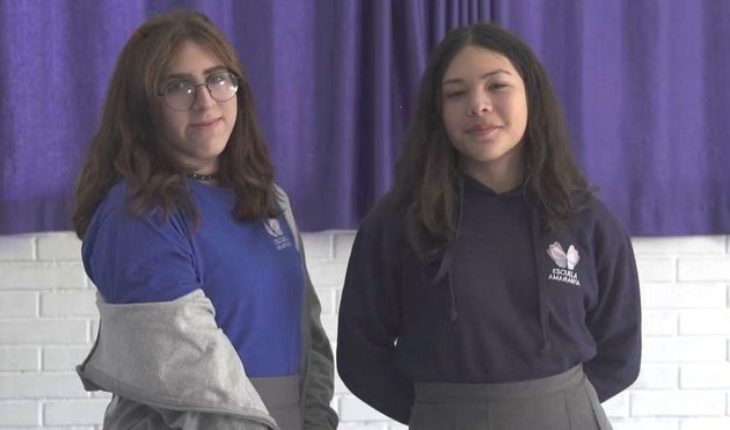“You know who you are. When I started growing up, and my family started buying me feminine things, like dresses or I encouraged to wear long hair, makeup and stuff, I started to feel like it wasn’t me. ”
The words are from Mateo, a 17-year-old Chilean boy who is now part of the first Latin American school created for transgender students, called Amaranta Gómez.
The educational establishment, located in the commune of Ñuñoa, in Santiago de Chile, has 39 students of which 22 are identified as trans.
The rest are cisgender, that is to say, minors whose gender identity coincides with the sex that was assigned to them at birth. They are the friends and families of trans children.
Mateo joined Amaranta last year, after he began his transition and decided to leave his previous school where only girls were studying.
“When I got out, they took it very well, but they couldn’t help me as I needed it. So I decided to leave that school, “he explains.
Like Mateo, many of the students who study in Amaranta arrived here after not being identified with traditional education.
“I didn’t feel comfortable in my school because I was invisible, nobody talked about the trans,” says one of the college students.
Another of the students added that in their previous school “there was no respect for both teachers and students.”
Freedom
The establishment opened its doors in April of last year.
On the first day of school, only five students arrived and today, after an exponential growth of their students, they already have two classrooms, one for young people from 12 years old and another for the younger ones.
The Institute is dependent on the Maria Foundation, an organization that seeks to protect the rights of transgender children and young people.
Evelyn Silva, director of Amaranta, believes that gender “is not as static as we think: either you’re a boy or a girl.”
“Kids go from one side to the other, they’re freer than us. I think as parents or older people, we always want to tell them what they are. You’re a kid, aren’t you? Tell me. But sometimes they don’t know, they just want to play, they just want to grow up and be happy, “he explains.
Studies have raised doubts about transgenderism in childhood, suggesting that often gender identity in pre-puberty and puberty is not the same as ten or twenty years later.
In this regard, the school principal points out that this approach does not “matter much” to them.
“Here at school, children are the ones who want to be now. We educate from people and their emotions, and that takes time. It takes time for children to learn that they can play here, they can laugh, they can scratch their hands, but they are also here to learn, “he says.
“To be Myself”
Consulted by BBC on what it means to be trans, Mateo, the 17-year-old boy, said: “For me it’s just something normal, it’s just being myself.”
One of his companions, meanwhile, added: “Being trans is like being freer.” While another of the students said: “It is to be yourself and always trust in you. If you want to be trans, you can, because it’s your body. ”
The name of the first transgender establishment in the world comes from Amaranta Gómez, a Mexican activist who is defined as muxe, a concept of Zapotec culture and refers to people who have an identity built from the feminine, despite having been Assigned to a male sex.
At the beginning of last year, Gomez was in Chile and in his honor the school was baptized with his name.
When consulted by BBC on how it would be defined now, being in this school, one of the girls responds:
“I’m a brave person.”





